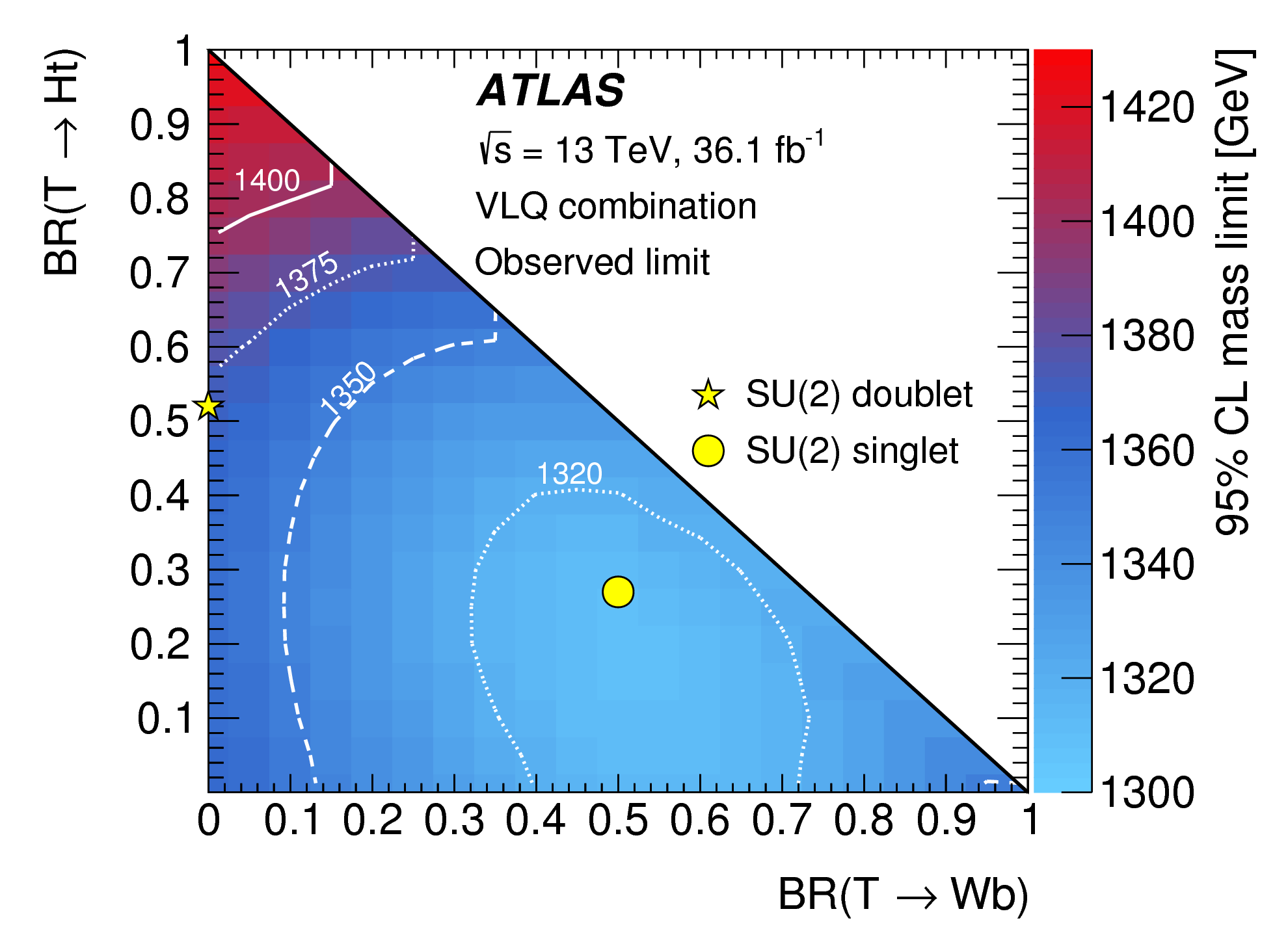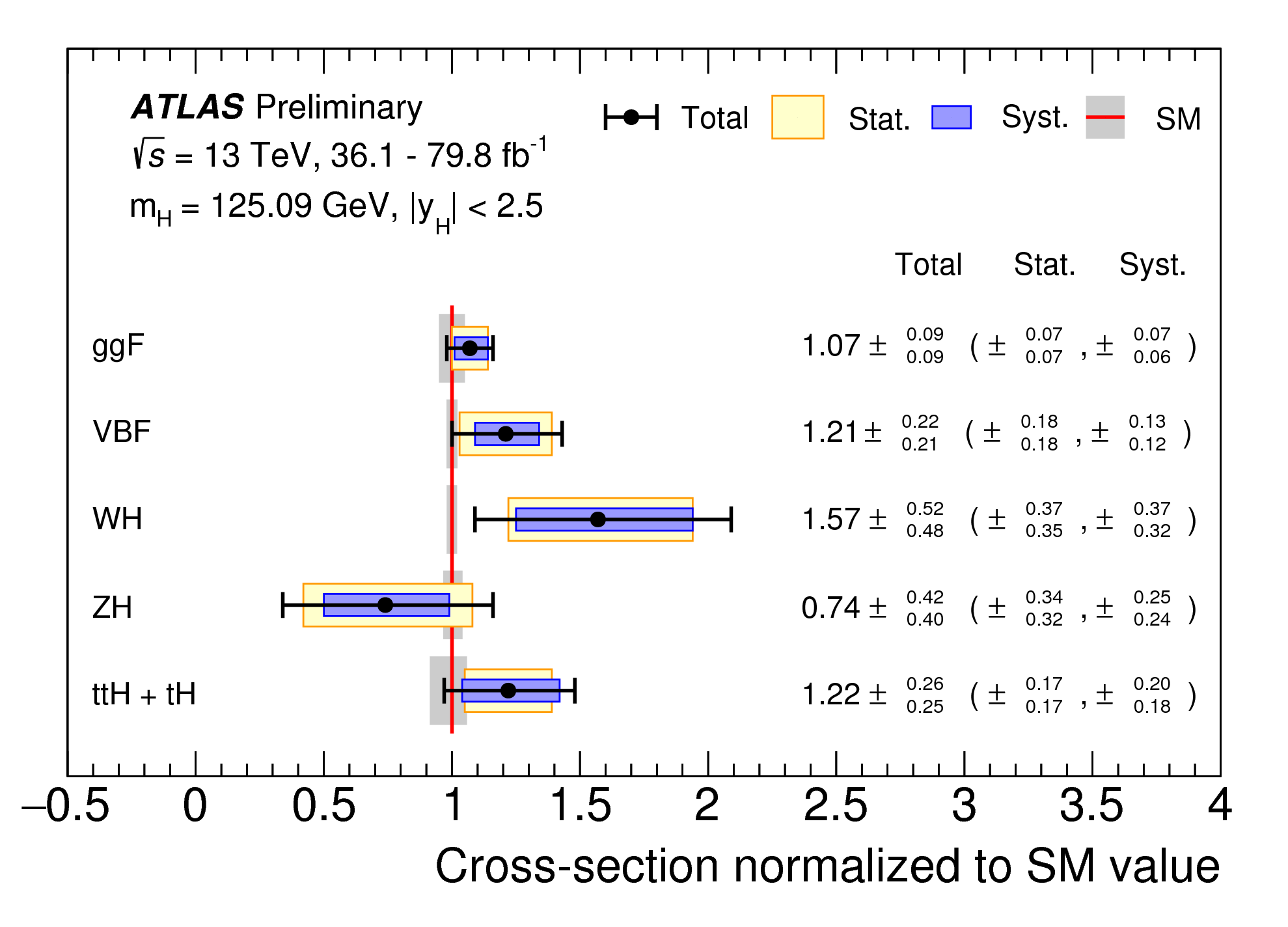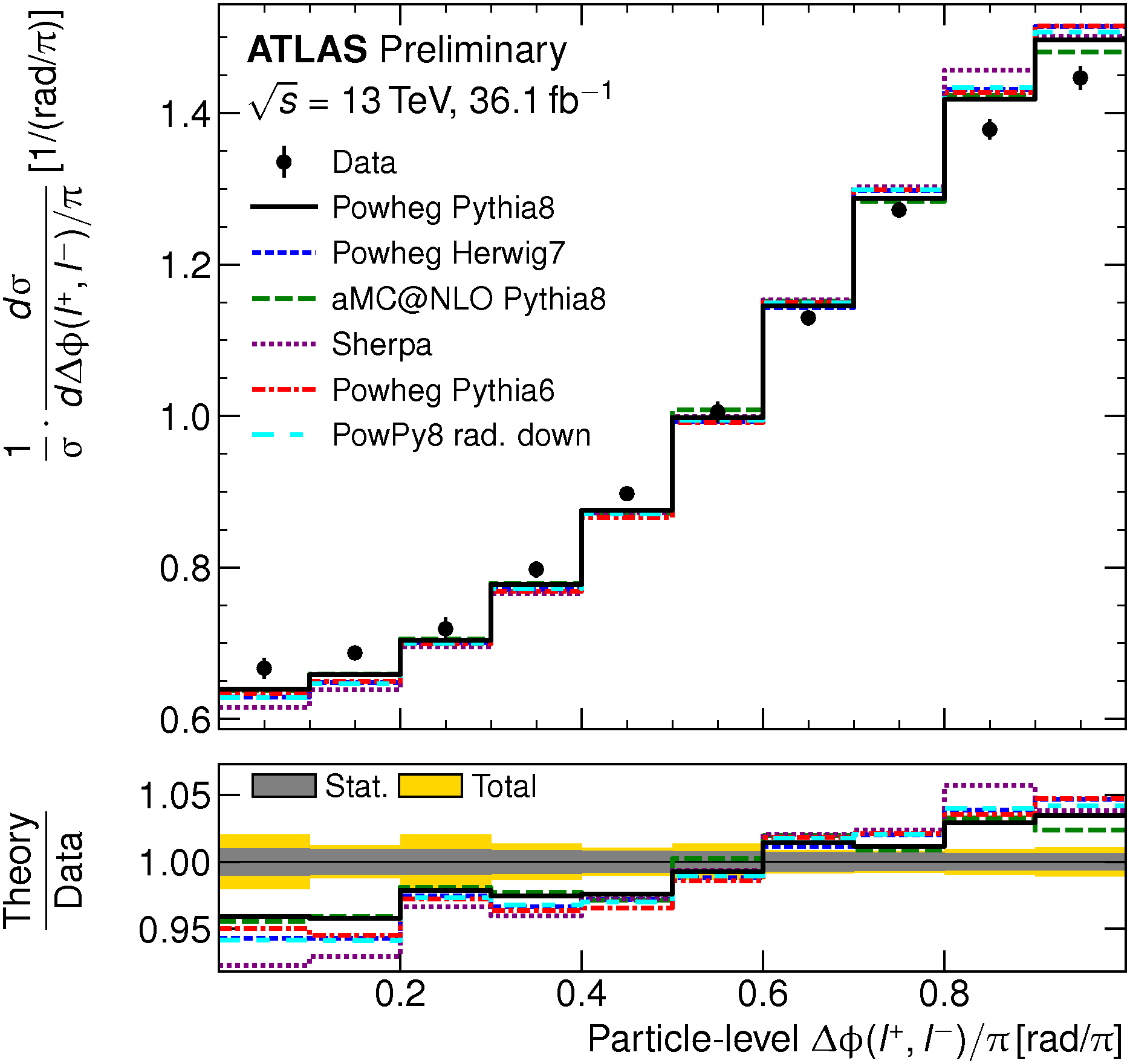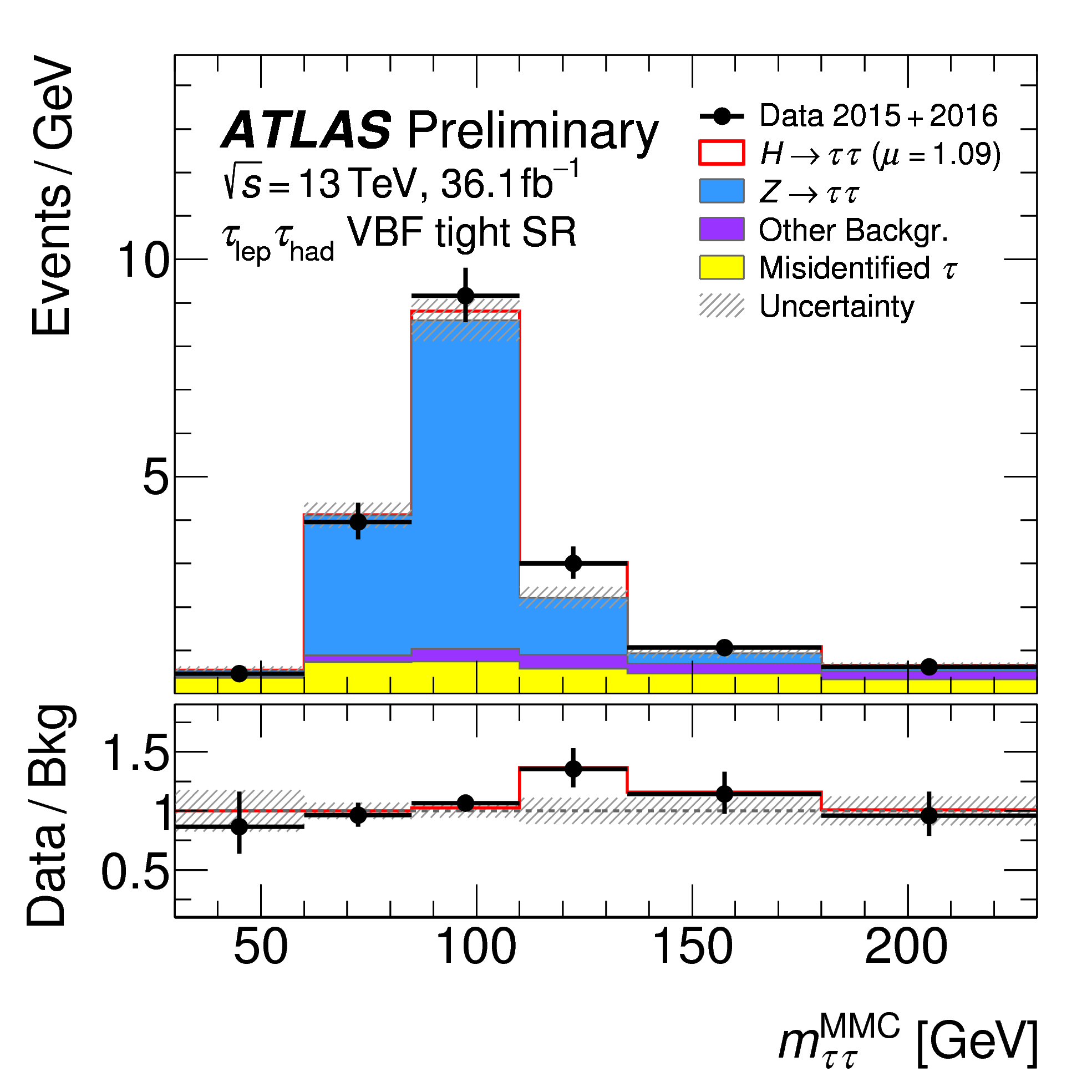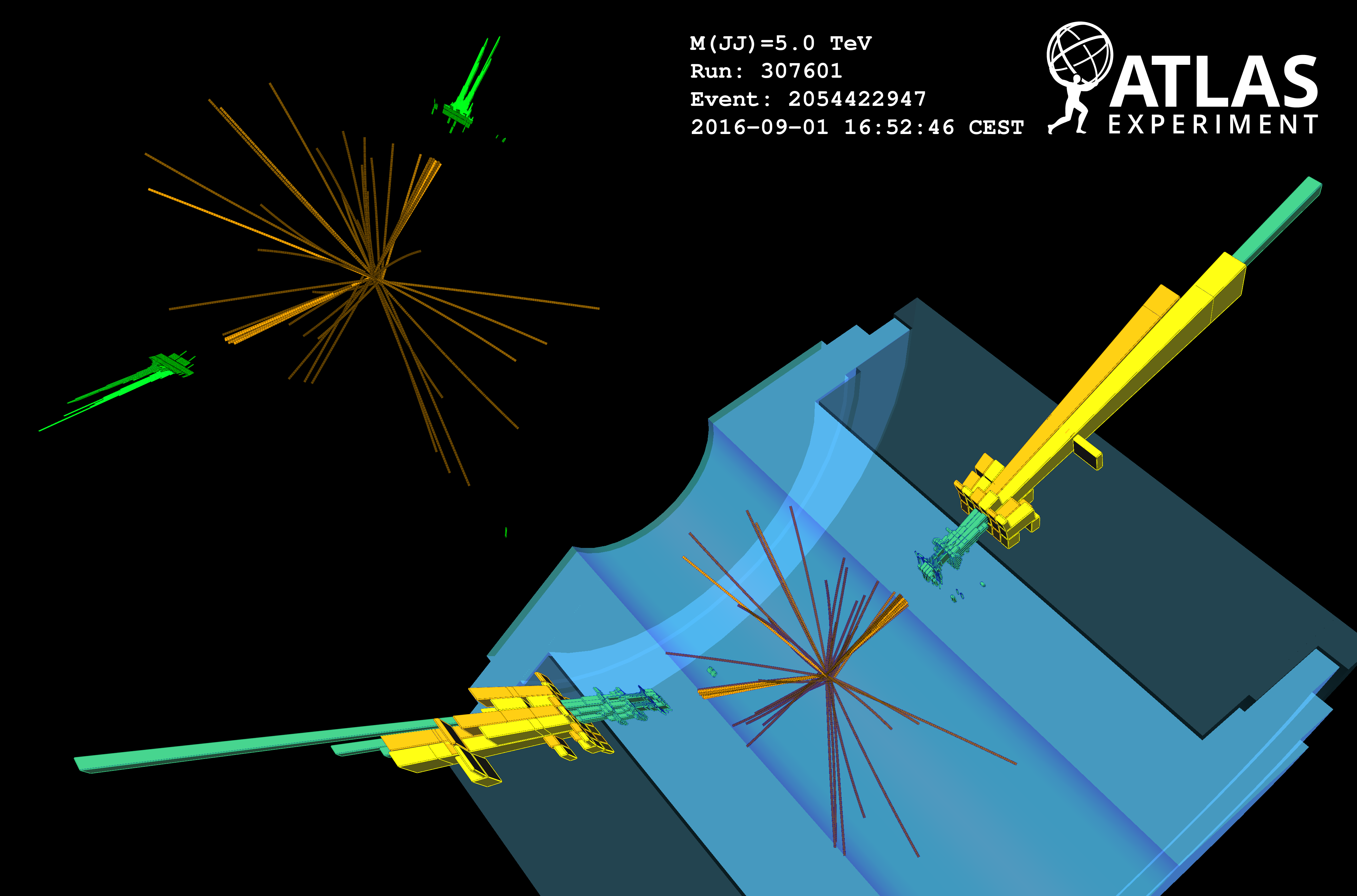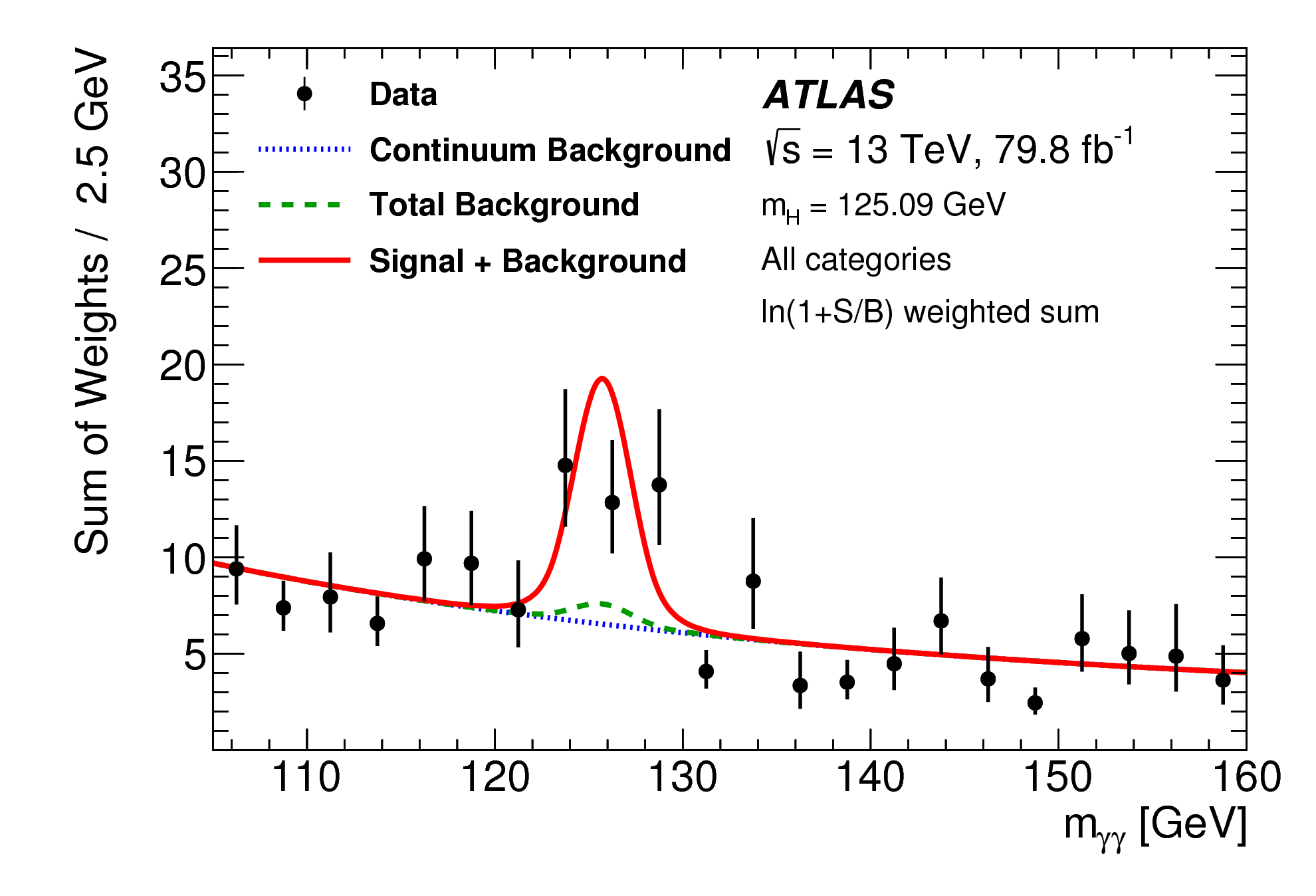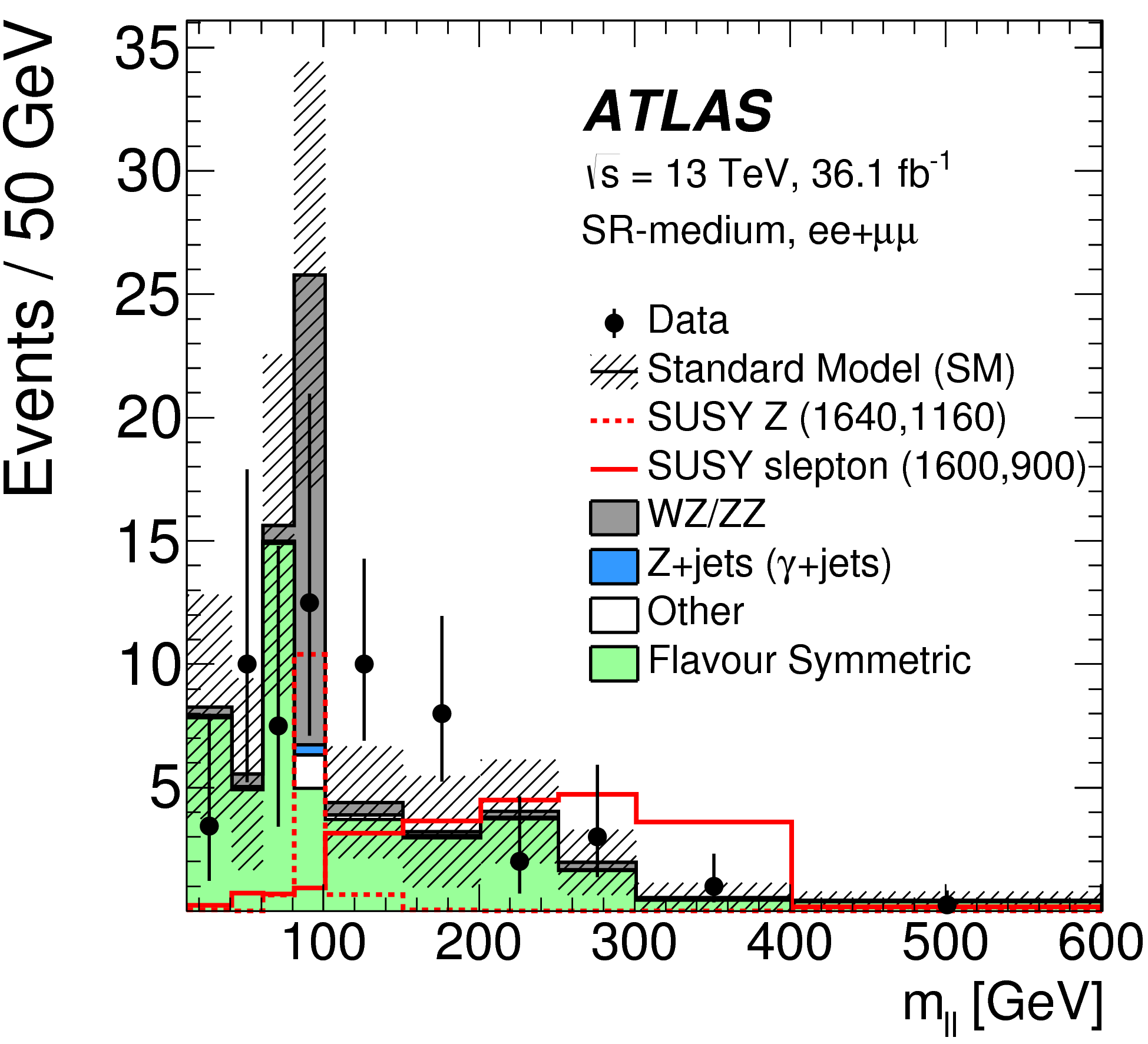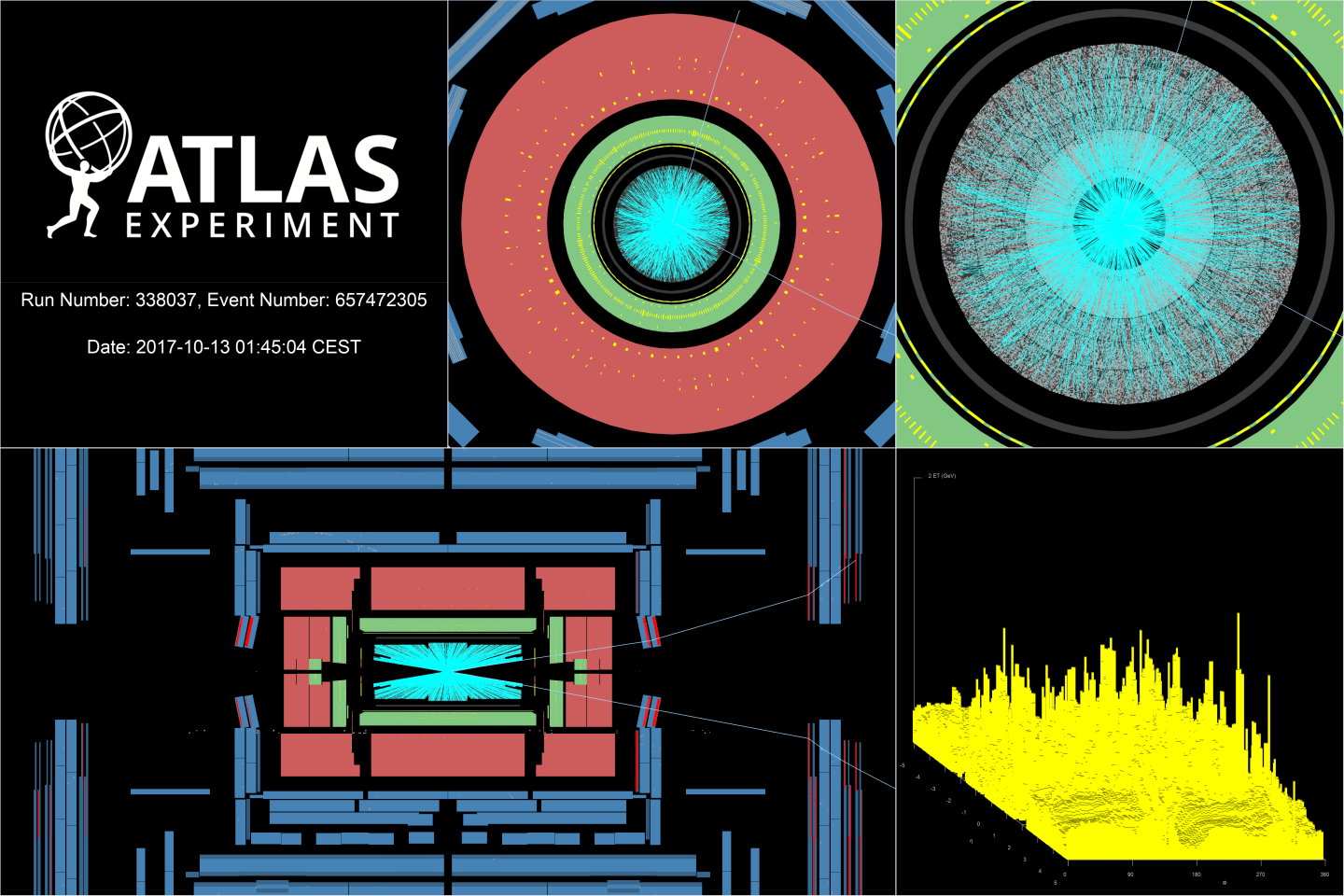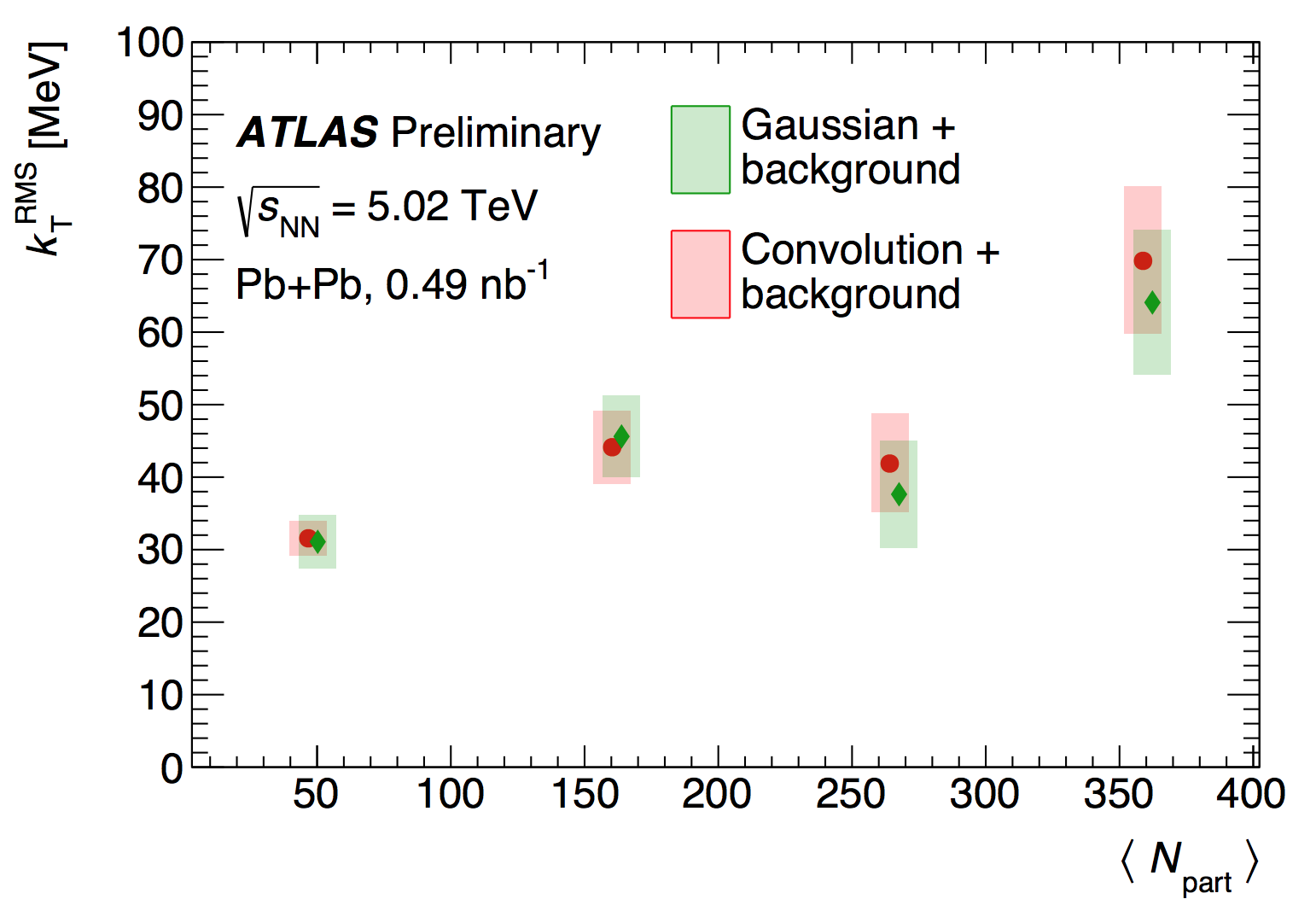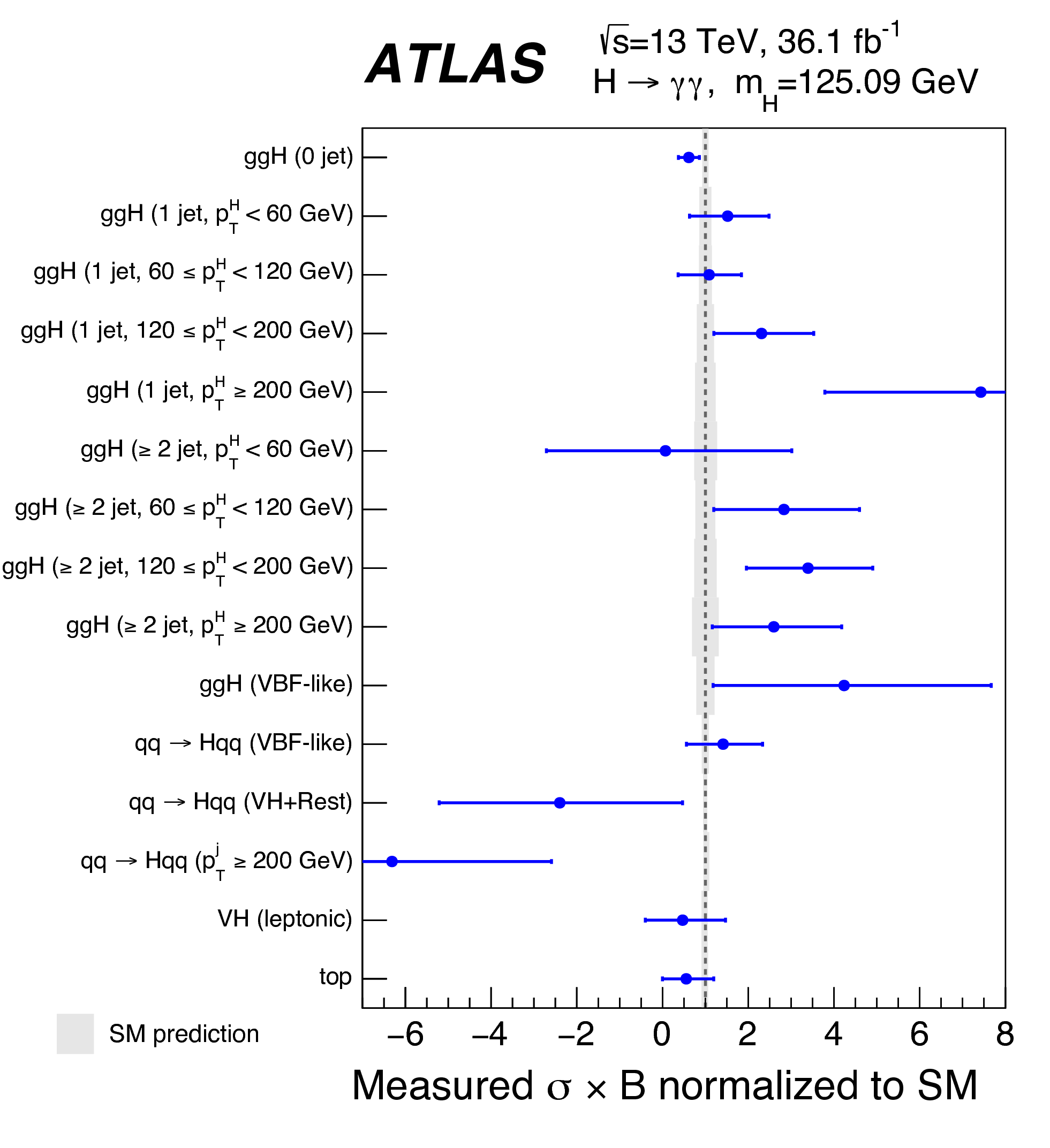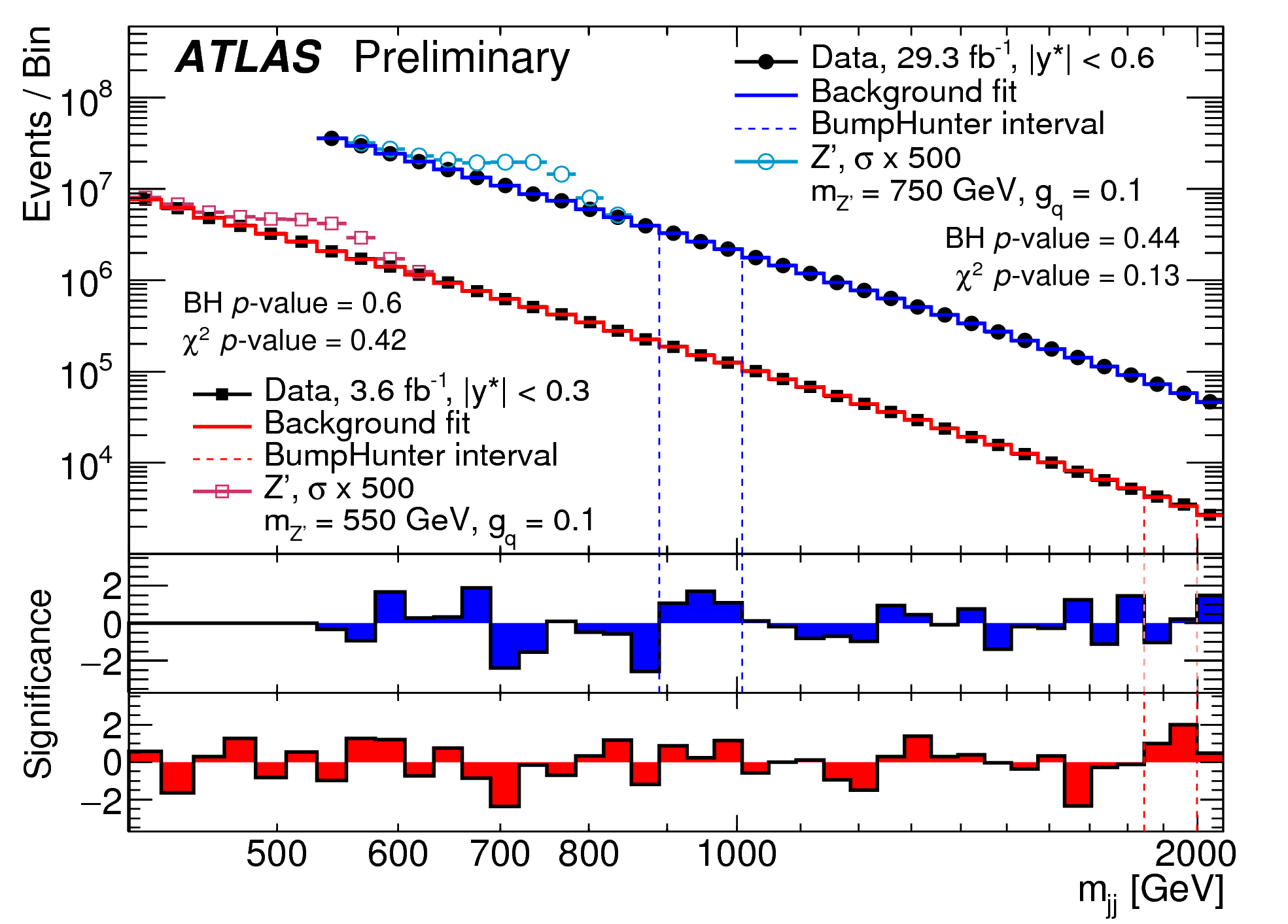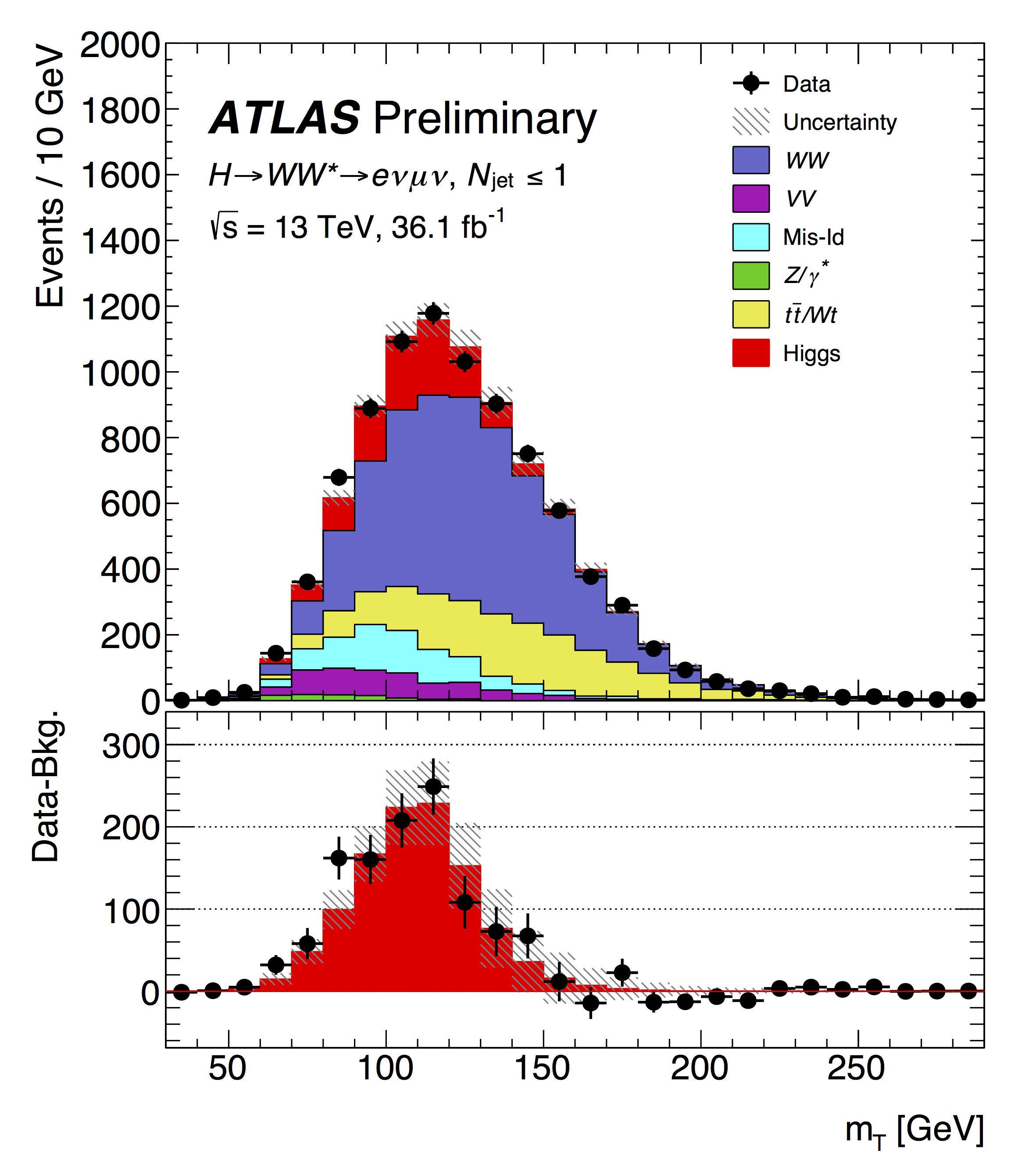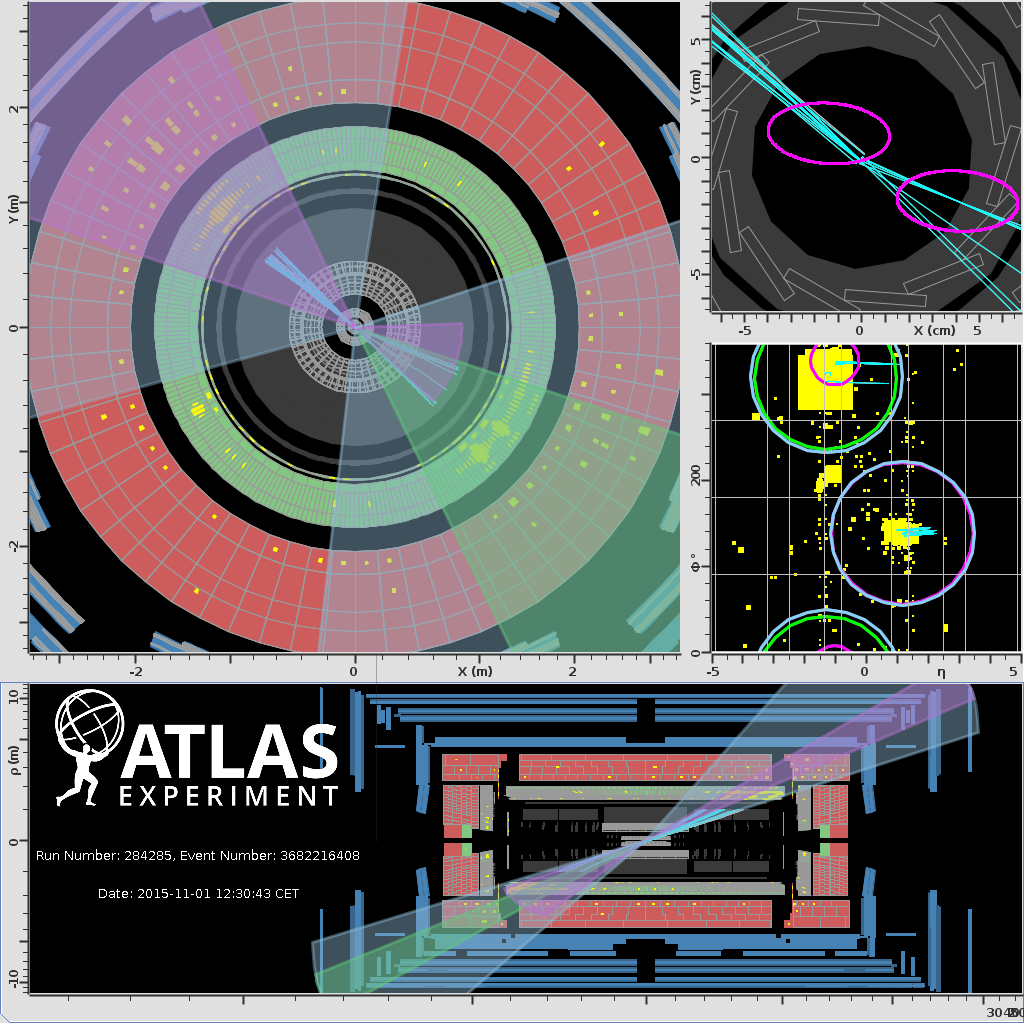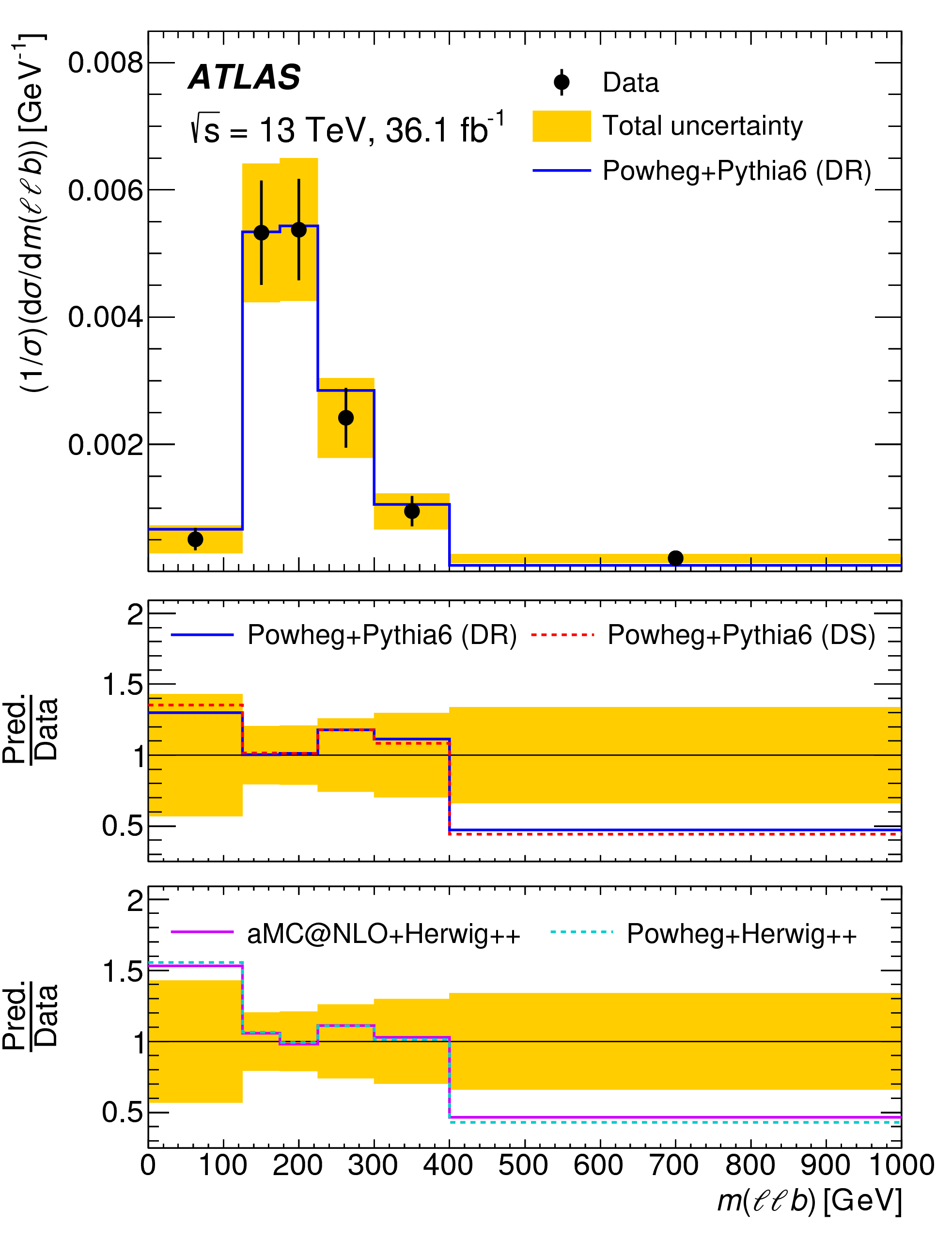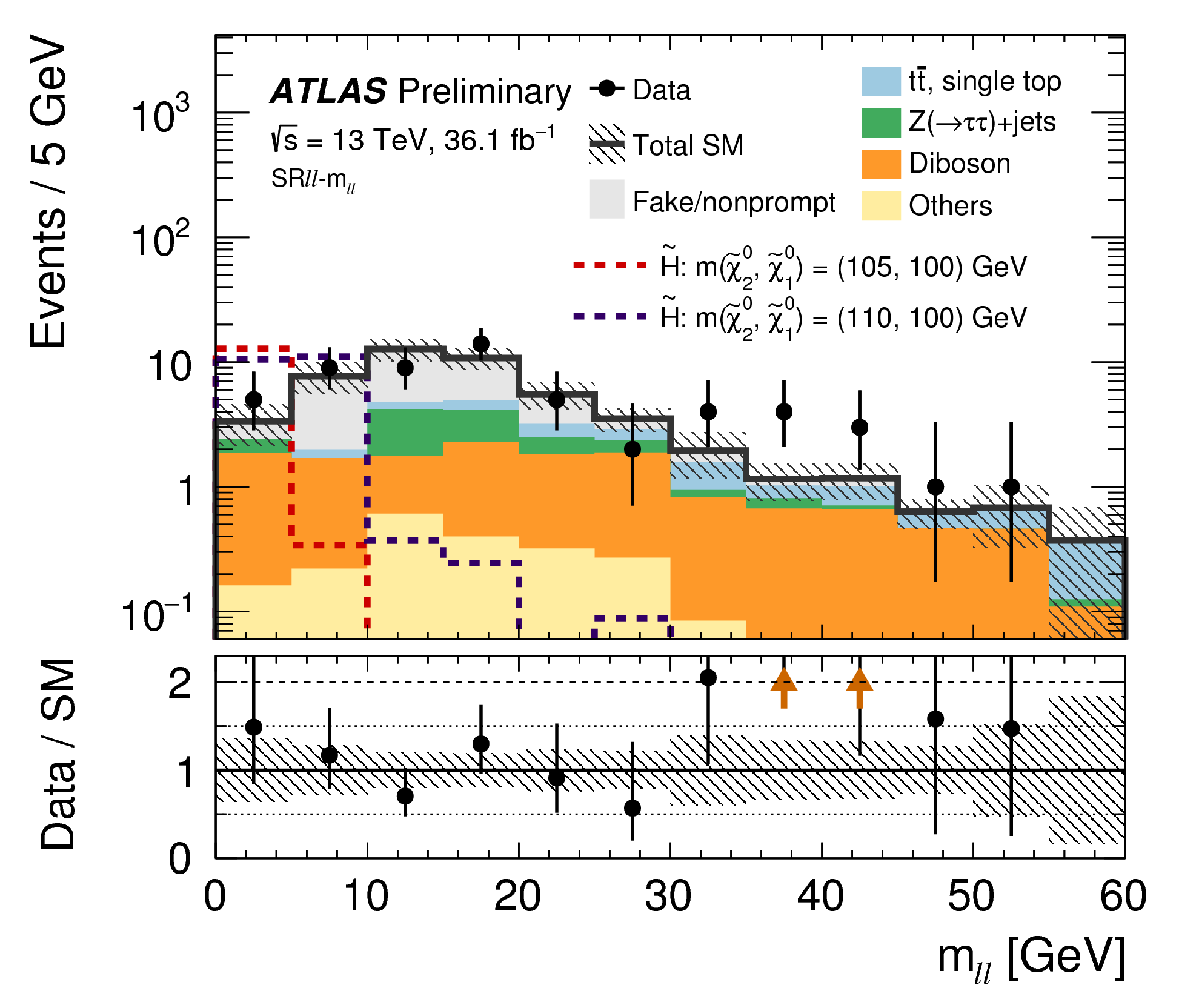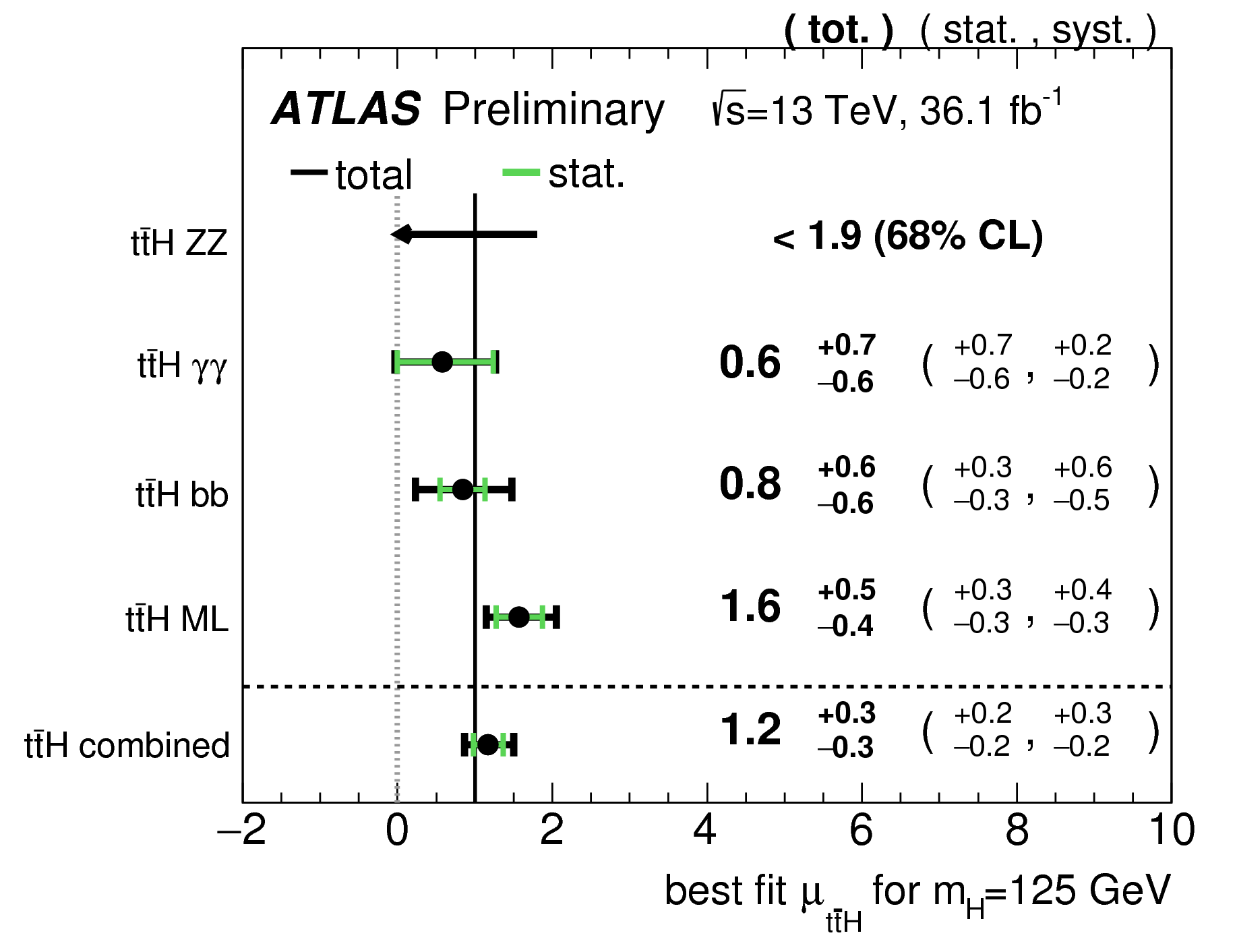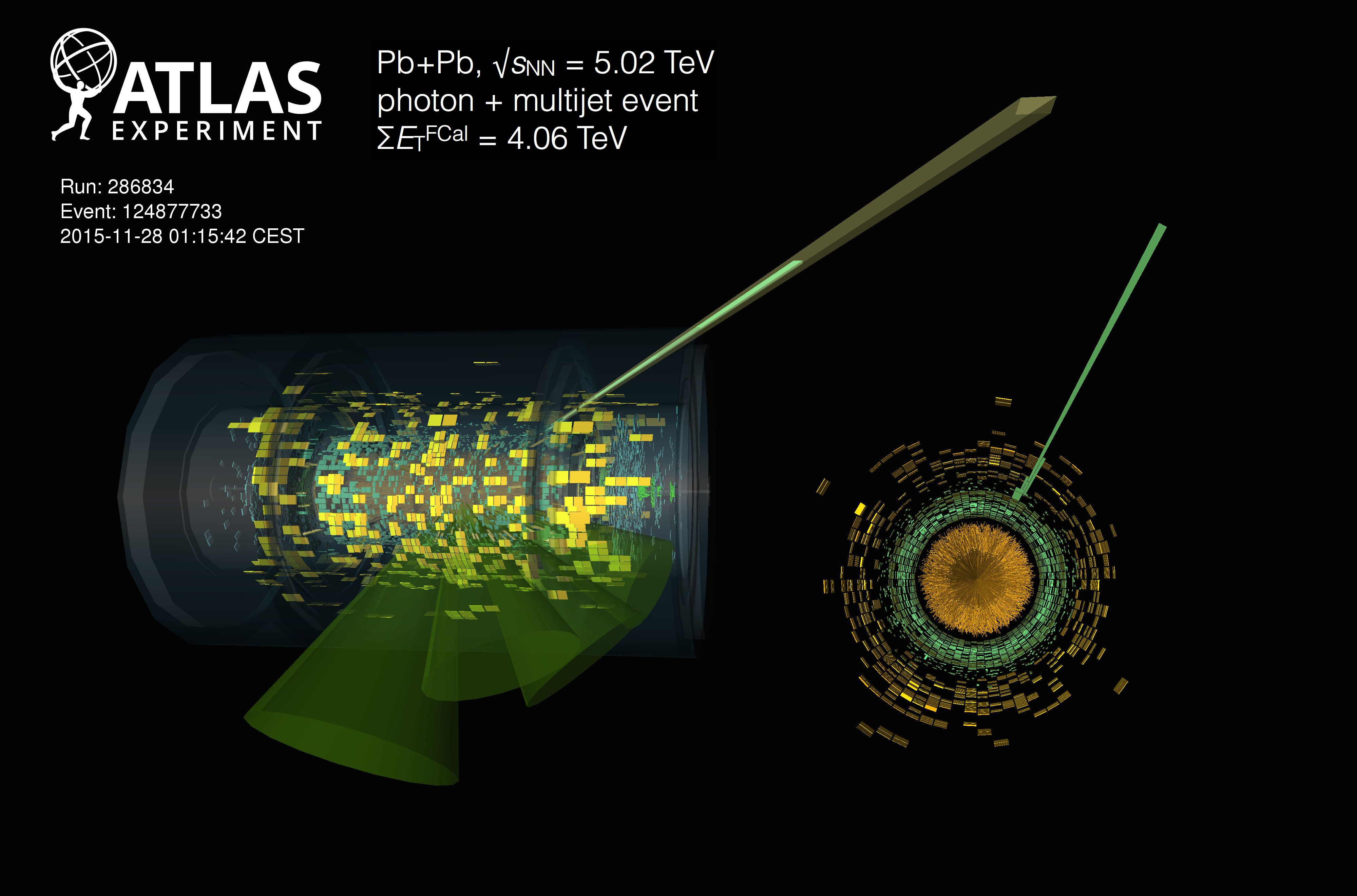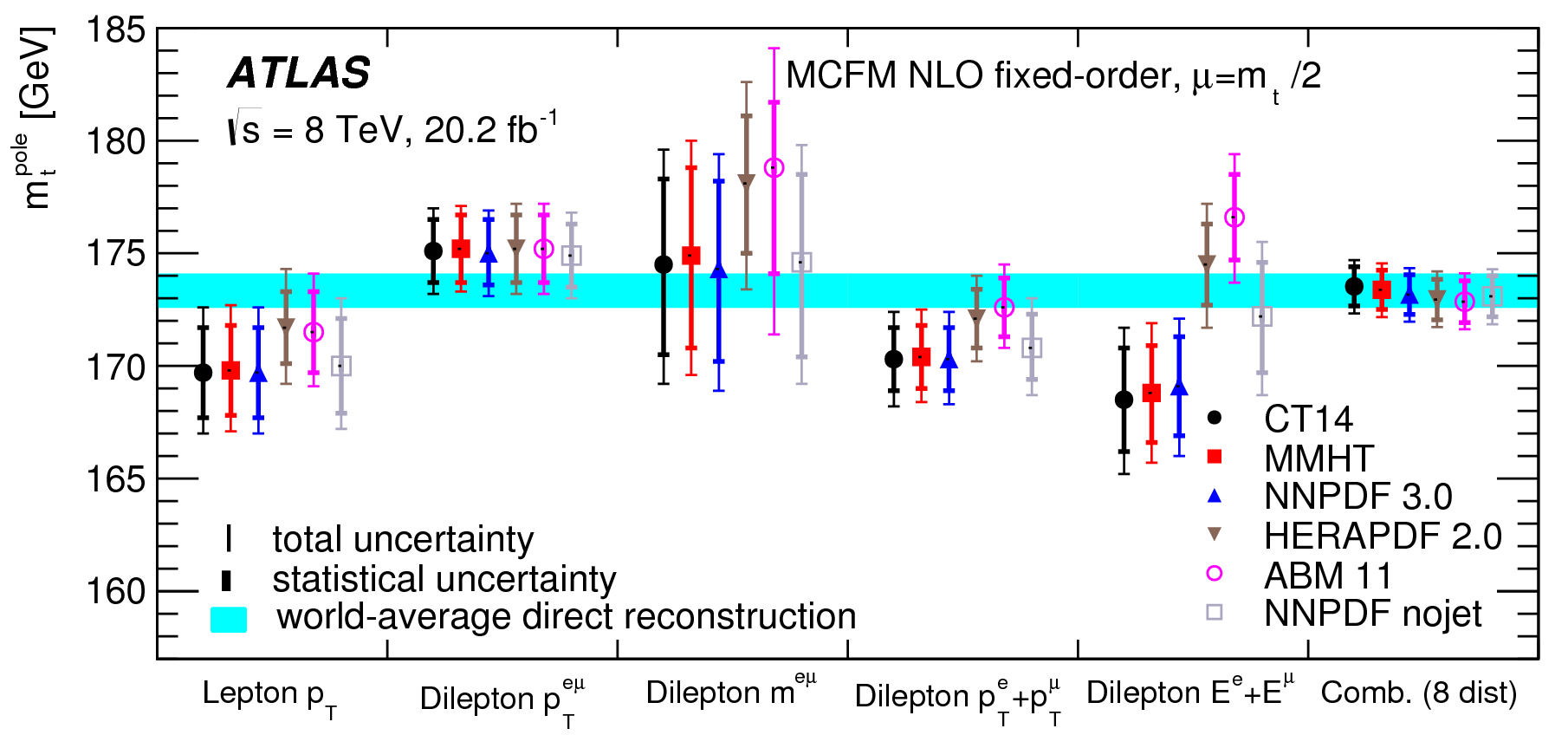Briefings
ATLAS searches for double Higgs production
The Brout-Englert-Higgs (BEH) mechanism is at the core of the Standard Model, the theory that describes the fundamental constituents of matter and their interactions. It introduces a new field, the Higgs field, through which the weak bosons (W and Z) become massive while the photon remains massless. The excitation of this field is a physical particle, the Higgs boson, which was discovered by the ATLAS and CMS collaborations in 2012.
Stronger together: combining searches for new heavy resonances
While the Standard Model has proven tremendously successful, much experimental evidence points to it not being a complete description of our universe. The search for “new physics” is therefore an important component of the ATLAS experimental programme, where a number of analyses are looking for signs of new heavy particles decaying to different final states. Though these searches have not yet found a significant signal, they have allowed physicists to place stringent constraints on different new physics scenarios. These can be further tightened by combining different analysis channels and approaches.
Could a new type of quark fix the “unnaturalness” of the Standard Model?
While the discovery of the Higgs boson at the Large Hadron Collider (LHC) in 2012 confirmed many Standard Model predictions, it has raised as many questions as it has answered. For example, interactions at the quantum level between the Higgs boson and the top quark ought to lead to a huge Higgs boson mass, possibly as large as the Planck mass (>1018 GeV). So why is it only 125 GeV? Is there a mechanism at play to cancel these large quantum corrections caused by the top quark (t)? Finding a way to explain the lightness of the Higgs boson is one of the top (no pun intended) questions in particle physics.
Higgs boson observed decaying to b quarks – at last!
Today, at the 2018 International Conference on High Energy Physics in Seoul, the ATLAS experiment reported a preliminary result establishing the observation of the Higgs boson decaying into pairs of b quarks, furthermore at a rate consistent with the Standard Model prediction.
Combined measurements of Higgs boson couplings reach new level of precision
Higgs boson couplings manifest themselves in the rate of production of the Higgs boson at the LHC, and its decay branching ratios into various final states. These rates have been precisely measured by the ATLAS experiment, using up to 80 fb–1 of data collected at a proton-proton collision energy of 13 TeV from 2015 to 2017. Measurements were performed in all of the main decay channels of the Higgs boson: to pairs of photons, W and Z bosons, bottom quarks, taus, and muons. The overall production rate of the Higgs boson was measured to be in agreement with Standard Model predictions, with an uncertainty of 8%. The uncertainty is reduced from 11% in the previous combined measurements released last year.
Precision leads to puzzles
The top quark is a unique particle due to its phenomenally high mass. It decays in less than 10-24 seconds, that is, before it had time to interact with any other particles. Therefore many of its quantum numbers, such as its spin, are transferred to its decay particles. When created in matter-antimatter pairs, the spins of the top quark and the antitop quark are expected to be correlated to some degree.
Quarks observed to interact via minuscule “weak lightsabers”
Two among the rarest processes probed so far at the LHC, the scattering between W and Z bosons emitted by quarks in proton-proton collisions, have been established by the ATLAS experiment at CERN.
Beyond any doubt: Higgs boson couples to the heaviest lepton
A decisive property of the Higgs boson is its affinity to mass. The heavier a particle is, the stronger the Higgs boson will couple to it. While physicists have firmly established this property for heavy W and Z bosons (force carriers), more data are needed to measure the Higgs boson coupling to the heavy fermions (matter particles). These interactions, known as Yukawa couplings, are very interesting as they proceed through a quite different mechanism than the coupling to force-carrying bosons in the Standard Model.
Catching hadronic vector boson decays with a finer net
Many theoretical models predict that new physics, which could provide answers to these questions, could manifest itself as yet-undiscovered massive particles. These include massive new particles that would decay to much lighter high-momentum electroweak bosons (W and Z). These in turn decay, and the most common signature would be pairs of highly collimated bundles of particles, known as jets.
New ATLAS result establishes production of Higgs boson in association with top quarks
According to the Standard Model, quarks, charged leptons, and W and Z bosons obtain their mass through interactions with the Higgs field, whose fluctuation gives rise to the Higgs boson. To test this theory, ATLAS takes high-precision measurements of the interactions between the Higgs boson and these particles. While experiments had observed and measured the Higgs boson decaying to pairs of W or Z bosons, photons or tau leptons, the Higgs coupling to quarks had – until now – not been observed.
The edge of SUSY
The ATLAS experiment has just completed a new search for evidence of supersymmetry (SUSY), a theory that predicts the existence of new “super-partner” particles, with different properties from their Standard Model counterparts. This search looks for SUSY particles decaying to produce two leptons and scrutinises the invariant mass distribution of these leptons, hoping to find a bump.
Noble collisions give new insights on heavy ion systems
In October 2017, the ATLAS experiment recorded collisions of xenon nuclei for the first time. While massive compared to a proton, xenon nuclei are smaller than the lead ions typically collided in the LHC. The xenon-xenon collision data, combined with previous results from the analysis of lead-lead collisions, provide the first opportunity to examine heavy ion collisions in a system that is distinctly smaller in size. This allows physicists to study in detail the role of the collision geometry for observables often associated with the quark-gluon plasma.
ATLAS studies the quark-gluon plasma using muon pairs produced by two photons
Heavy ion collisions at the Large Hadron Collider (LHC) form a hot, dense medium called the quark-gluon plasma (QGP), in which the primary constituents are thought to be quarks and gluons produced in the initial interactions of the nuclei. Besides typical heavy ion collisions, where the nucleons in the colliding nuclei undergo multiple strong interactions with each other, there is also a class of “ultraperipheral” collisions. In these collisions, the nuclei are far enough apart to miss each other, but the surrounding electromagnetic field of one nucleus is able to interact both with the other nucleus (“photonuclear” interactions) and with the other electromagnetic field (“photon-photon” interactions).
Searching for forces beyond the Standard Model
The ATLAS collaboration is continuing to scour the wealth of data provided by the LHC for any signs of physics beyond the particles and interactions described by the Standard Model. One approach is to search for new forces in addition to the Standard Model’s electroweak and strong interactions. Such forces could be propagated by new massive bosons playing the role the W and Z bosons have in mediating the electroweak force.
Charming SUSY: running out of places to hide
Why is gravity so much weaker than the other forces of nature? This fundamental discrepancy, known as the “hierarchy problem”, has long been a source of puzzlement. Since the discovery of a scalar particle, the Higgs boson, with a mass of 125 GeV near that of the W and Z bosons mediating the weak force, the hierarchy problem is more acute than ever.
ATLAS illuminates the Higgs boson at 13 TeV
The ATLAS collaboration has released a set of comprehensive results that illuminate the properties of the Higgs boson with improved precision, using its decay into two photons with LHC collisions recorded at a centre-of-mass energy of 13 TeV.
New data-collection method aids in the hunt for new physics
What do you do when you produce more data than you can handle? This might seem like a strange question for experimental physicists, but it’s a problem that the ATLAS detector faces every day. While the LHC continues to produce ever-higher rates of proton collisions, the detector can only record data at a fixed rate. Therefore, tough choices must be made about what events to keep. This is not a decision made lightly – what if the thrown-away data contain some long-sought new particles beyond those of the Standard Model.
The exploration of the Higgs boson continues
Discovering the Higgs boson can be likened to finding a new continent. While a momentous event in itself, the most exciting part remains the exploration of the new land! In a new result presented today at the Rencontres de Moriond, the ATLAS collaboration examined the Higgs boson decaying into two W bosons
ATLAS studies the dynamics of very high-momentum top quarks
The top quark – the heaviest known fundamental particle – plays a unique role in high-energy physics. Studies of its properties have opened new opportunities for furthering our knowledge of the Standard Model. In a new paper submitted to Physical Review D, the ATLAS collaboration presents a comprehensive measurement of high-momentum top-quark pair production at 13 TeV.
Measurements of weak top quark processes gain strength
The production of top quarks in association with vector bosons is a hot topic at the LHC. ATLAS first reported strong evidence for the production of a top quark in association with a Z boson at the EPS 2017 conference. In a paper submitted to the Journal of High-Energy Physics, the ATLAS experiment describes the measurement of top-quark production in association with a W boson in 13 TeV collisions.
Searching for supersymmetric Higgs bosons on the compressed frontier
The Standard Model has a number of puzzling features. For instance, why does the Higgs boson have a relatively low mass? Could its mass arise from a hidden symmetry that keeps it from being extremely heavy? And what about dark matter? While the Standard Model has some (almost) invisible particles, like neutrinos, those particles can’t account for all of the dark matter observed by cosmological measurements.
Squeezing sleptons at the LHC
Supersymmetry (SUSY) is an extension of the Standard Model that predicts the existence of “superpartners” with slightly different properties compared to their Standard Model counterparts. Physicists have been searching for signs of SUSY for over forty years, so far without success, which makes us think that SUSY particles — should they exist — are also heavier than particles in the Standard Model. However, in order for SUSY to help mitigate some problems with the Higgs boson sector of the Standard Model, SUSY particles should not be too heavy. And if some SUSY particles are relatively light, then they should be produced copiously at CERN’s Large Hadron Collider (LHC). So for SUSY to remain an attractive theory of nature, it must be hiding in plain sight in LHC data.
ATLAS finds evidence of the Higgs boson produced in association with a pair of top quarks
The ATLAS collaboration has presented evidence of “ttH production”, a rare process where a pair of top quarks emits a Higgs boson. Observing this process would provide new insight into the Higgs mechanism and allow for new studies of how unknown physics might (or might not) change the behaviour of this fundamental particle.
Photon-tagged jet quenching in the quark-gluon plasma
Collisions of lead nuclei in the LHC form the hot, dense medium known as the quark-gluon plasma (QGP). Experimentally, the QGP is characterized by the collective flow of emerging quarks and gluons. They fragment into highly collimated “jets” of particles that in turn lose energy through a phenomenon known as “jet quenching”. Studying this effect can help improve our understanding of quantum chromodynamics, the theory of the strong nuclear interaction that governs the behaviour of the QGP.
Studying fragments of the top quark
Using Run 1 data, ATLAS reports a new differential production rate measurement of top quark pairs and a precise new determination of the top quark mass.



